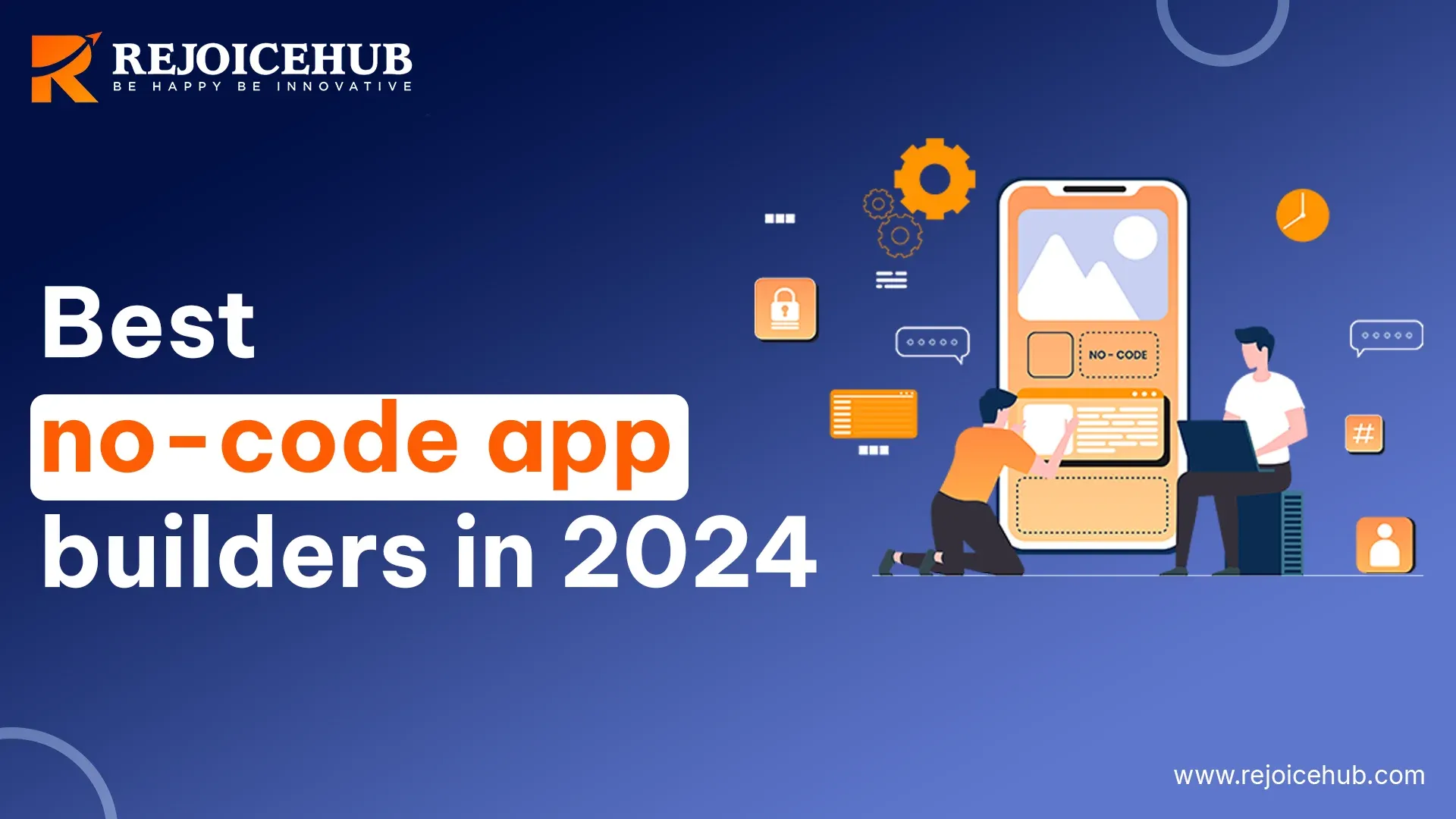
We live in times where so many things are automated.
And building apps and websites are no exception.
There are a number of no code app builders out there which can be used to develop apps by app creator without coding. Each has their own pros and cons. Some offer more templates while some offer more customization.
But the question is which is the best no code app builder.
Let's find out!
What are No-Code Tools?
No-code tools are software platforms that help you create applications without coding. You can use graphical interfaces and pre-built elements to develop a platform. Whether you need a mobile app builder or website builder, you can find a no code tool for your requirements.
They don’t just help with building apps, they also help you with automating workflows and data management.
Pricing: Free version available, paid plan starts at $36/month
| Tool | Best for | Standout feature | Pricing |
|---|---|---|---|
| Webflow | Customizable websites | Advanced design tools with CMS and SEO | Free, paid starts at $14/month |
| Softr | Creating web apps from Airtable data | Airtable integration | Free, paid starts at $49/month |
| Bubble | Complex web applications | Visual programming and workflows | Free, paid starts at $29/month |
| Glide | Mobile apps from Google Sheets | Google Sheets integration | Free, paid starts at $49/month |
| FlutterFlow and Firebase | Mobile applications with Firebase | Firebase real-time sync | Free, paid starts at $30/month |
| Mailchimp | Email marketing and landing pages | All-in-one marketing suite | Starts at $20/month |
| Parabola | Automating data workflows | Drag-and-drop data automation | Free, paid starts at $80/month |
| Voiceflow | Conversational AI and voice apps | Voice interface creation | Free, paid starts at $50/month |
| Draftbit | Mobile app prototyping | React Native app export | Free, paid starts at $19/month |
| Airtable | Database and project management | Spreadsheet-based backend | Free, paid starts at $45/month |
| Coda | Customizable workflows | Combines docs with automation | Only charges for docs |
| Gumroad | Selling digital products | Simple digital storefront setup | 10% flat fee on sales |
| Zapier | Building interactive workflows | Drag-and-drop app builder | Free, paid starts at $36/month |
Best no-code app builder tools & software
Whether you’re a developer or someone who doesn’t know coding, no code app builders will help you launch a platform without writing any code. Here’s the list of top 15 no code app builder tools and software.
1. Webflow
Webflow helps creators to build fully customizable websites without coding. It offers a set of design tools that helps you create responsive sites. Also, it is not limited to no code app building only. It lets you build sites with CMS, SEO features and more. All these without writing a single line of code. Creators love Webflow’s flexibility to design and launch websites that look professional.
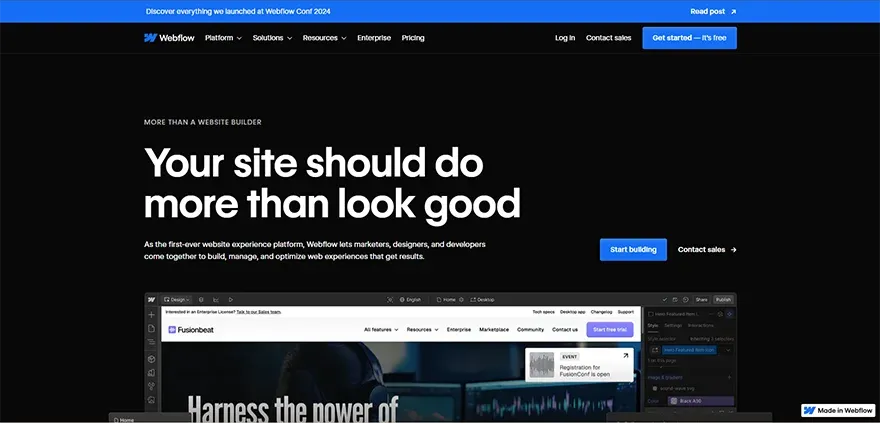
Pros
- Fully customizable with advanced design tools
- Built-in CMS and SEO capabilities
- Extensive resources and templates available
Cons
- Steeper learning curve for beginners
- E-commerce capabilities are limited compared to dedicated platforms
- Higher pricing for larger projects
- Pricing: Free version available, paid plan starts at $14/month
2. Softr
Softr enables users to create web applications directly from Airtable data. Great for MVPs and simple applications, it’s ideal for teams or individuals needing an efficient app-building tool. Softr’s templates and customizations make it easy to set up visually appealing apps without code, while its Airtable integration allows for streamlined backend management.
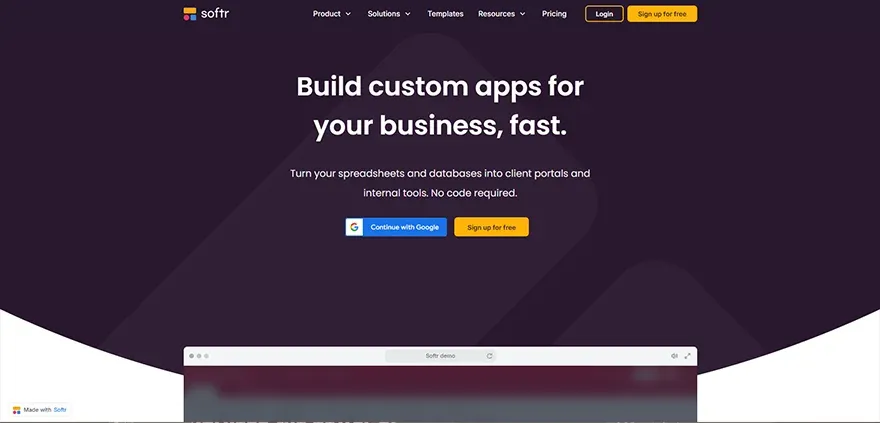
Pros
- Simple to learn with quick setup
- Smooth Airtable integration for backend management
- Flexible customization for layouts and visuals
Cons
- Limited in advanced app features and functionalities
- Higher-tier plans can be costly for large teams
- Not ideal for complex applications
- Pricing: Free version available, paid plan starts at $49/month
3. Bubble
Bubble provides a powerful visual development platform for building complex web applications without coding. With its visual programming approach, Bubble supports workflows, databases, and APIs, making it a go-to for building fully-functional web apps. Bubble’s platform is highly customizable, which allows users to create data-driven apps with advanced backend capabilities.
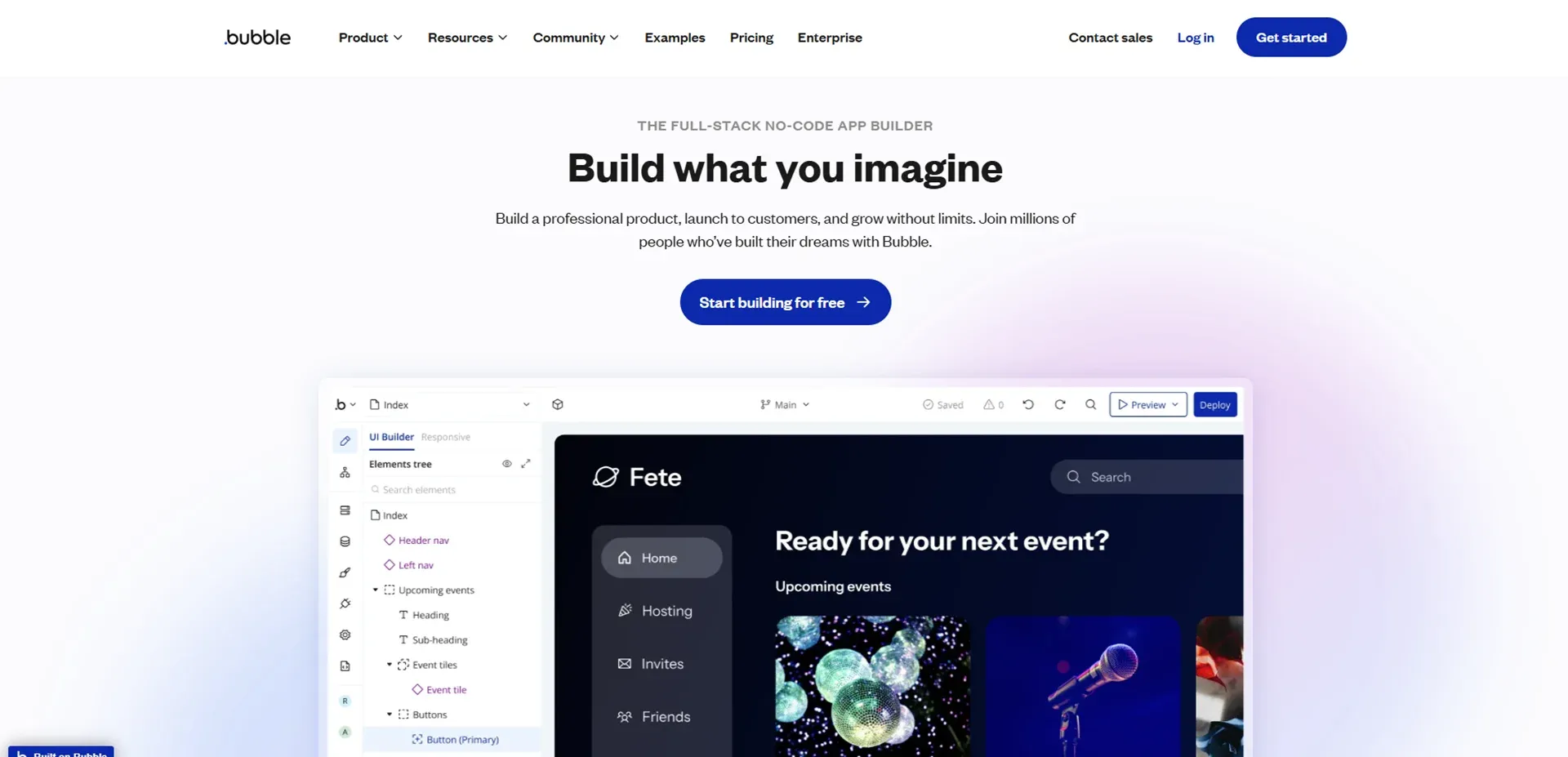
Pros
- Versatile and highly customizable
- Supports complex applications with visual programming
- Thriving community and extensive learning resources
Cons
- Challenging for beginners due to complexity
- Limited optimization for mobile apps
- Performance can lag with high workloads
- Pricing: Free version available, paid plan starts at $29/month
4. Glide
Glide helps you turn Google Sheets data into sleek mobile apps. It offers a quick and simple no-code solution for app creation. With its focus on mobile, Glide is perfect for smaller and simple applications. It’s particularly helpful for teams needing to manage data and tasks in a user-friendly interface, as it leverages Google Sheets to handle app data.
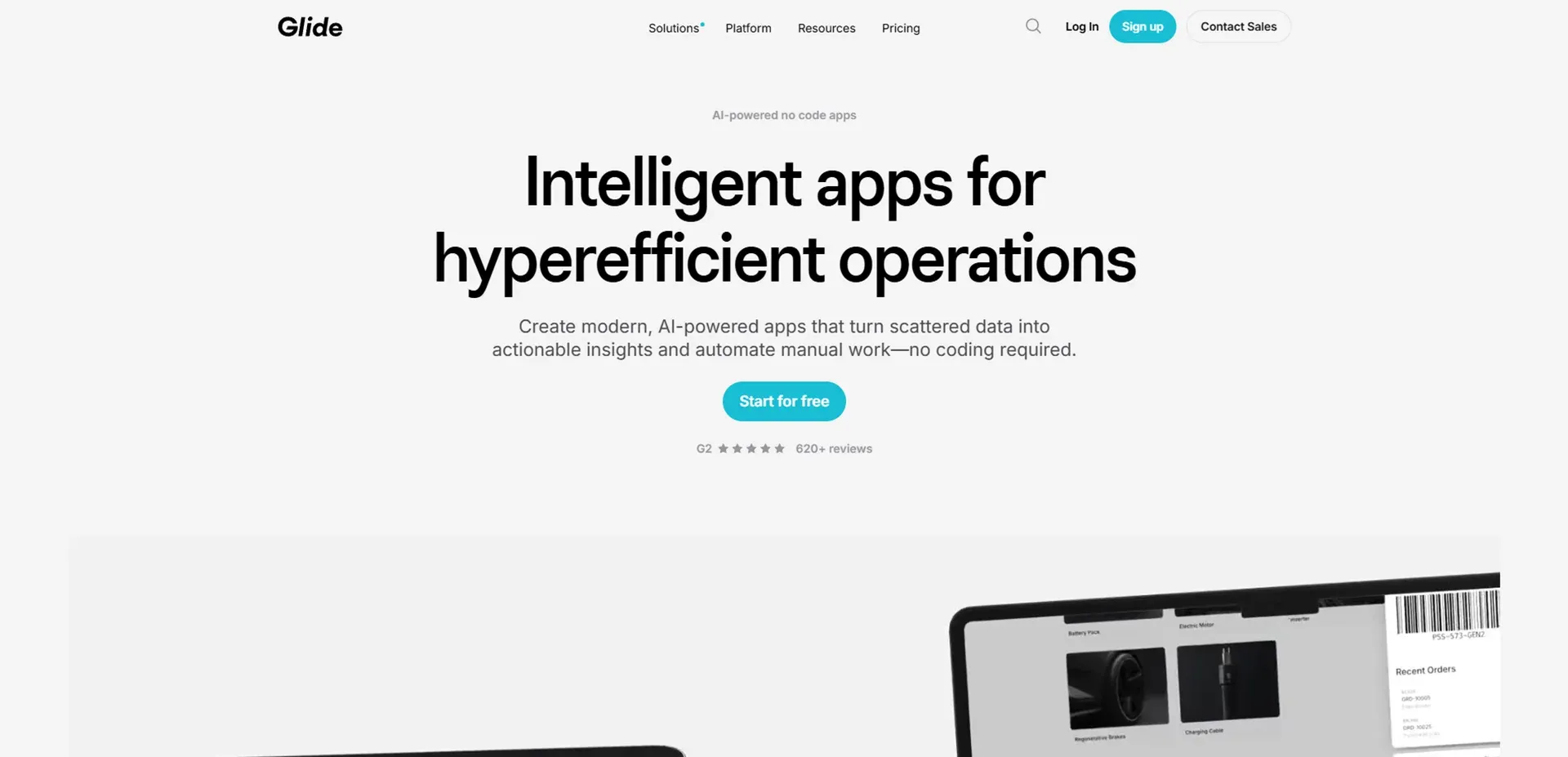
Pros
- Quick setup with seamless Google Sheets integration
- Mobile-friendly design for simple applications
- User-friendly and intuitive interface
Cons
- Limited customization for more intricate designs
- Mainly suitable for basic app needs
- Relies heavily on Google Sheets, limiting backend capabilities
- Pricing: Free version available, paid plan starts at $49/month
5. FlutterFlow and Firebase
FlutterFlow, backed by Google, offers a strong visual builder with Firebase integration, designed to build mobile applications with advanced UIs. It supports real-time updates and Firebase-backend databases, making it suitable for dynamic applications. FlutterFlow’s pre-built widgets simplify the design, while Firebase enables seamless backend data handling.
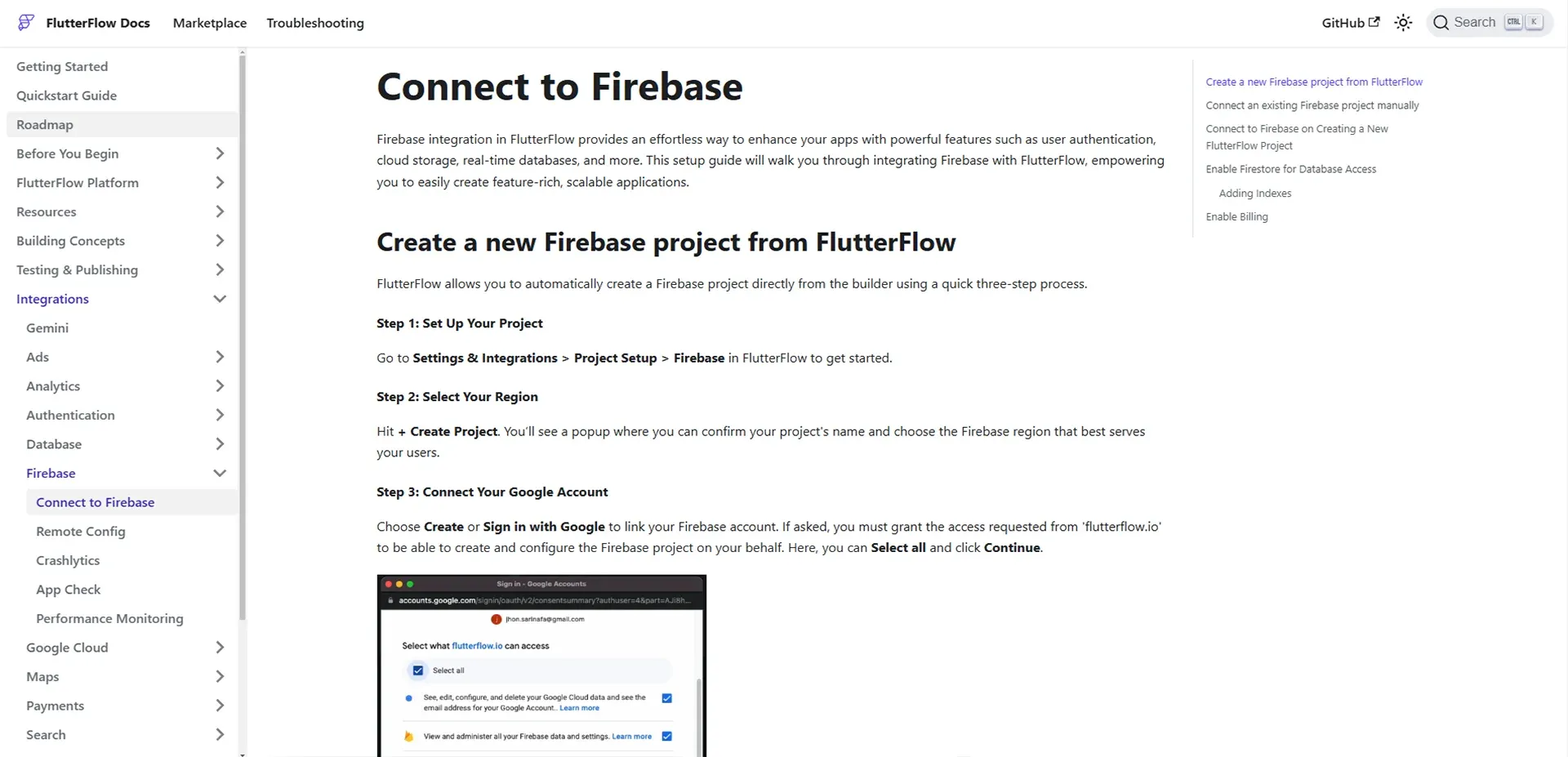
Pros
- Advanced UI elements and customization options
- Real-time data sync with Firebase integration
- Suitable for complex, data-driven apps
Cons
- Firebase dependency may limit customization
- Some backend limitations for complex workflows
- Requires Firebase knowledge for optimal usage
- Pricing: Free version available, paid plan starts at $30/month
Also read this article : Best open source software tools in 2024
6. Mailchimp
We all know Mailchimp as an email marketing tool. But now it offers no-code website development features also. You can design your landing pages and create lead-gen forms in it using Mailchimp. It helps with generating leads and since everything is in one platform, you don’t have to integrate with other platforms, which might require some technical knowledge.
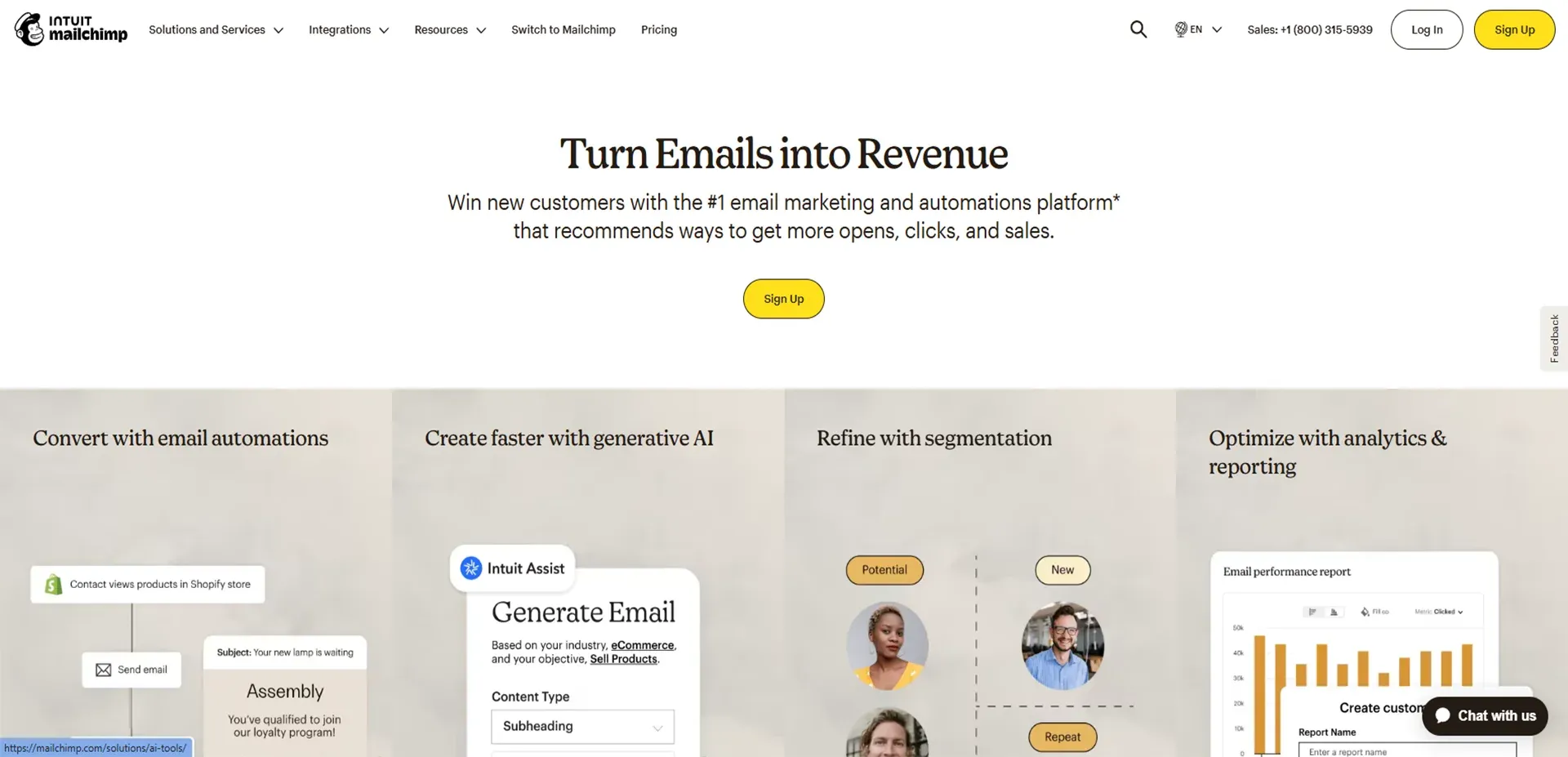
Pros
- Integrated email marketing and landing pages
- User-friendly interface
- Pre-built templates
- All-in-one marketing tool for small businesses
Cons
- Limited customization for advanced users
- More suited to marketing than app development
- Can be costly for higher-tier plans
- Pricing: No specific pricing for no-code platform, comes with a bundle that starts with $20/month
7. Parabola
Parabola automates complex data workflows without code, making it ideal for teams that need data processing and integration. It connects with various platforms, enabling data import, transformation, and export to automate business processes. Also, Parabola’s drag-and-drop features make data manipulation easy.
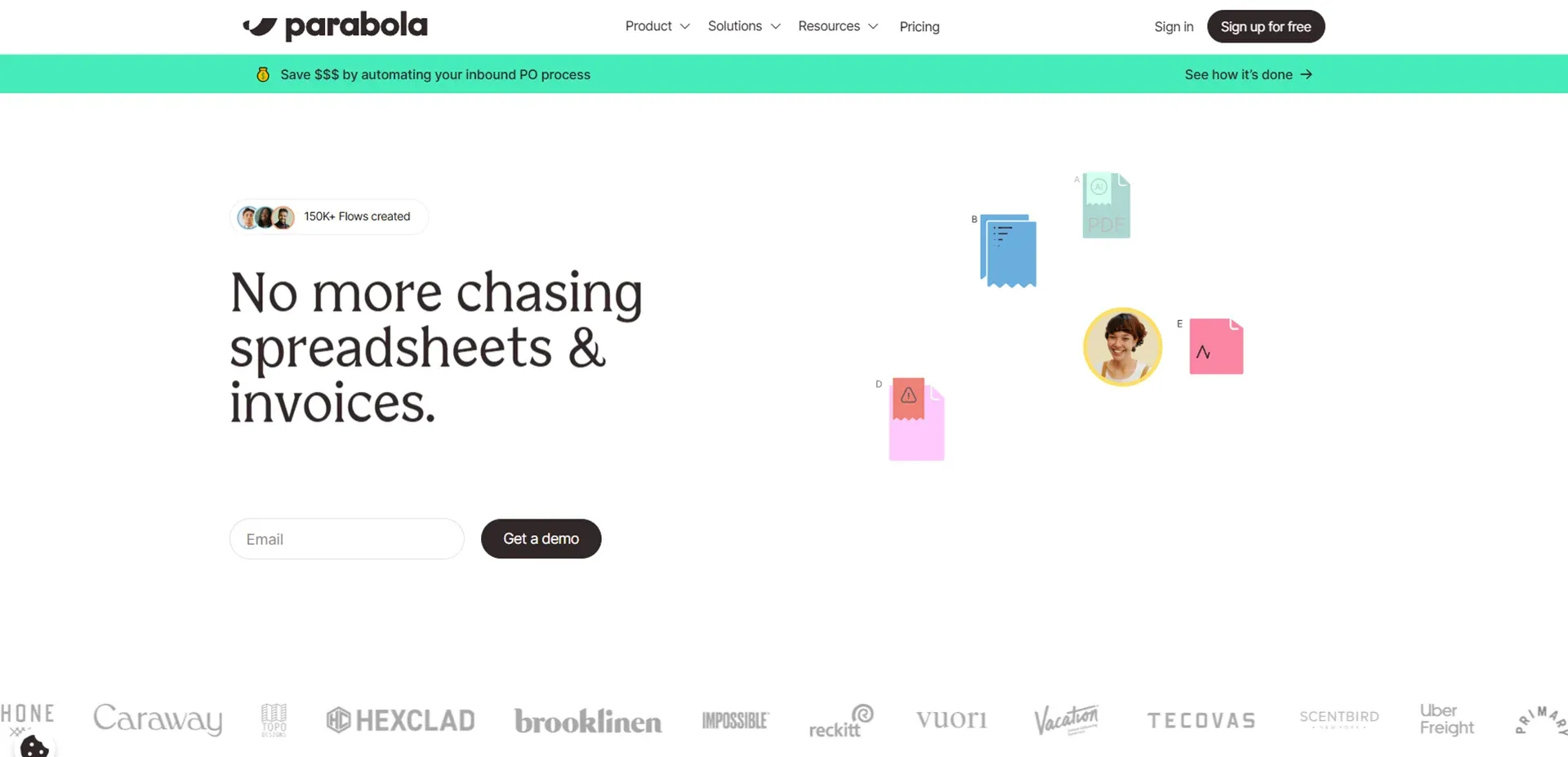
Pros
- Automates complex workflows and data integrations
- User-friendly drag-and-drop interface
- Flexible with multiple platform integrations
Cons
- Limited application beyond data manipulation
- Learning curve for complex workflows
- Higher cost for large-scale automation
- Pricing: Free version available, paid plan starts at $80/month
8. Voiceflow
Voiceflow specializes in building conversational AI and voice applications, making it popular for creating chatbots and Alexa Skills without code. It supports multiple voice platforms and allows users to design, test, and deploy voice interfaces, providing an easy-to-navigate builder with pre-configured templates.
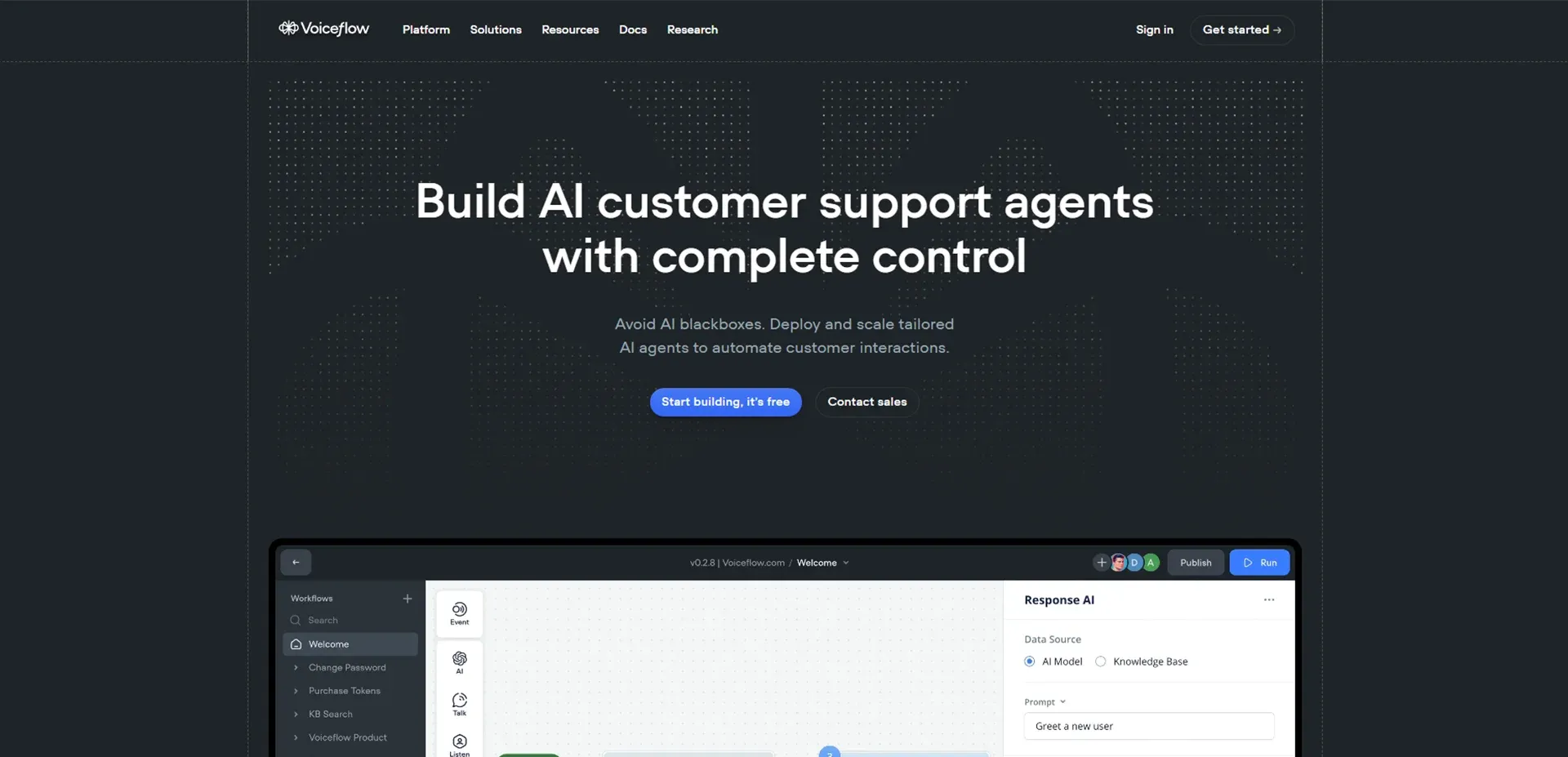
Pros
- Supports popular voice platforms like Alexa and Google Assistant
- Intuitive interface for chatbot and voice app creation
- Robust testing and deployment tools
Cons
- Limited to conversational app development
- Some limitations on complex customization
- Subscription required for full feature access
- Pricing: Free version available, paid plan starts at $50/month
9. Draftbit
Draftbit is another no-code mobile app builder that helps you to design and build prototypes for react native apps. So, if you are someone who wants to build MVPs and needs customization, you can use Draftbit. With Draftbit,, you get more control over the design and functionality without writing a line of code.
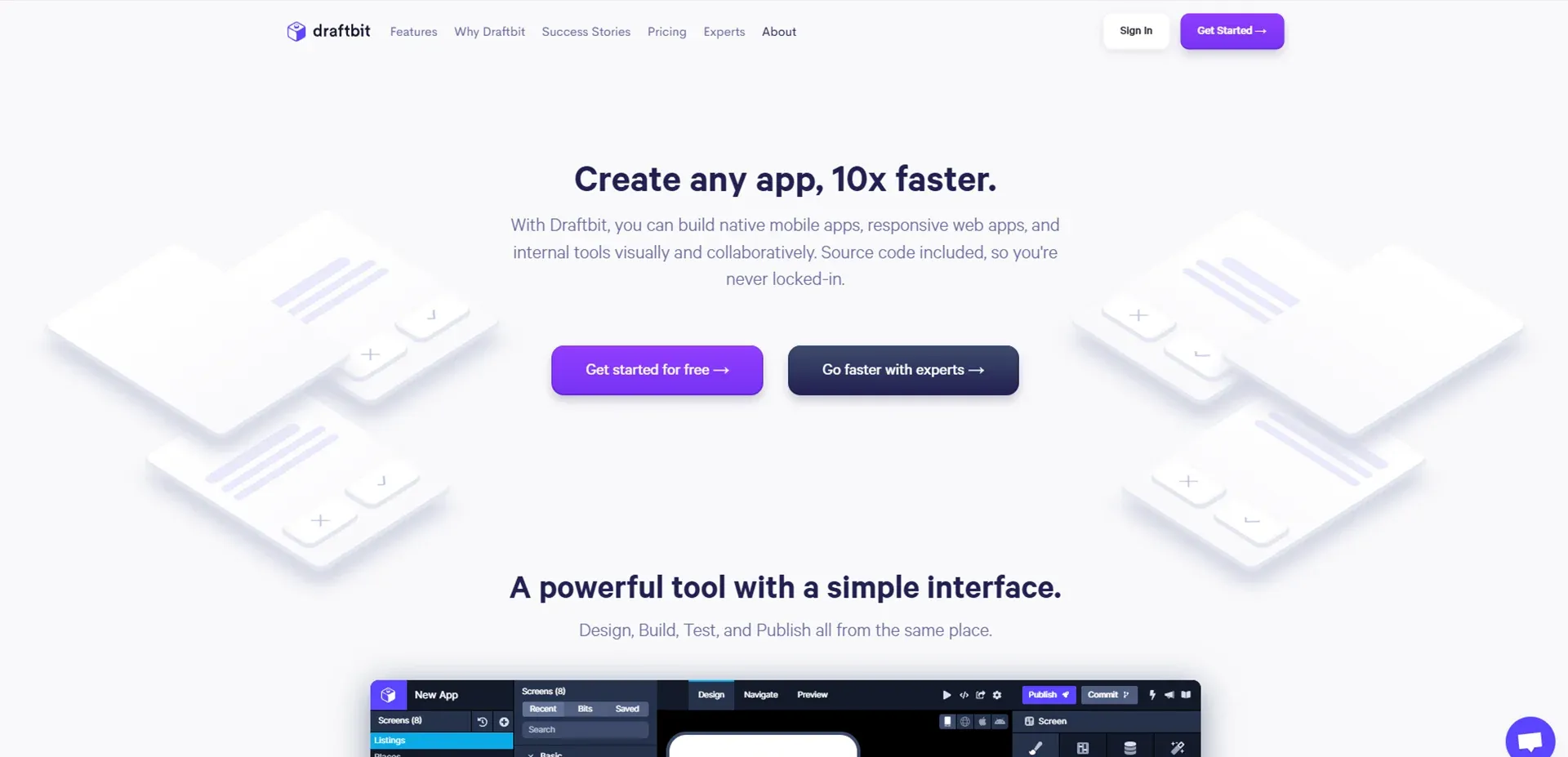
Pros
- High level of design control for mobile apps
- Suitable for complex app prototyping
- Exports to React Native code for future scalability
Cons
- Limited backend support
- May require some technical understanding of React Native
- Pricier than some alternatives for full access
- Pricing: Free version available, paid plan starts at $19/month
10. Airtable
Airtable is a spreadsheet-style database tool. It acts as a backend for your no code apps. With Airtable, you can create databases, workflows and automate tasks. It integrates with so many no code tools, so you can easily connect it with your tool and set up a database. And you don’t need any coding knowledge, because it is as simple as creating a spreadsheet.
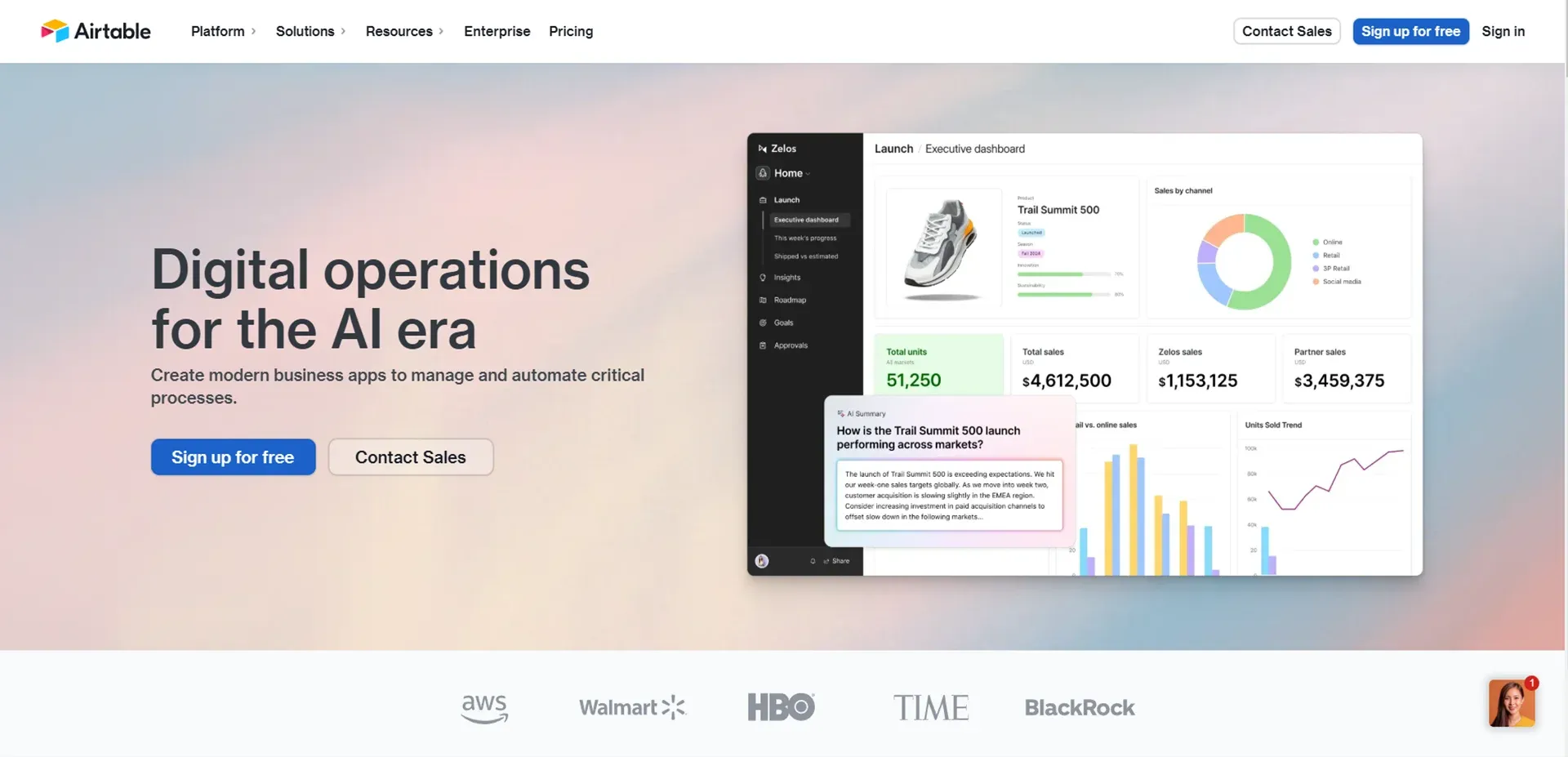
Pros
- User-friendly, spreadsheet-based interface
- Versatile for project management and CRM use cases
- Integrates with multiple platforms
Cons
- Limited advanced database functionalities
- Higher cost for larger teams
- Restricted flexibility for complex applications
- Pricing: Free version available, paid plan starts at $45/month
11. Coda
Coda combines spreadsheets and documents. It makes it a powerful tool for creating customizable workflows. It enables teams to build dynamic documents with data and automation, perfect for collaborative workspaces. Coda’s formula system allows users to add logic and automate processes without code.
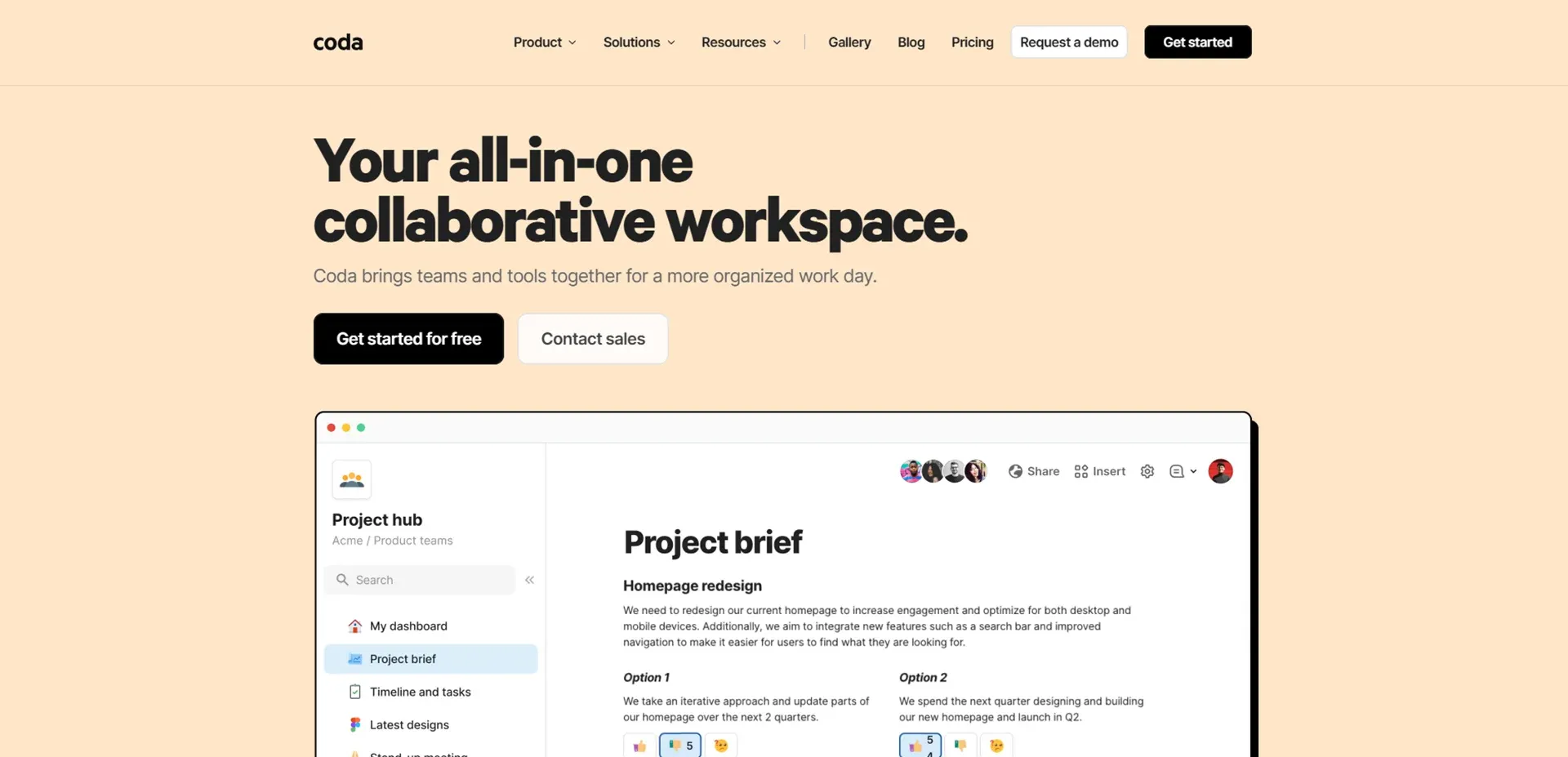
Pros
- Combines document and spreadsheet functionality
- Flexible for various workflows and collaboration
- Rich formula and automation features
Cons
- Steeper learning curve for advanced functions
- Higher-tier plans required for team use
- Limited for more app-focused needs
- Pricing: Only charges for docs
12. Gumroad
You must have heard about Gumroad. It is used for promoting digital products and so many digital creators are using it. It is because of the very simple reason- the pricing model. You see, in digital products success is not guaranteed and paying a fixed monthly fee comes with a burden. So what Gumroad came up with is you only have to pay when you start getting sales.. Gumroad only charges a 10% flat fee on your sales. So, artists, writers and creators can use it to monetize their content, without writing a single line of code.
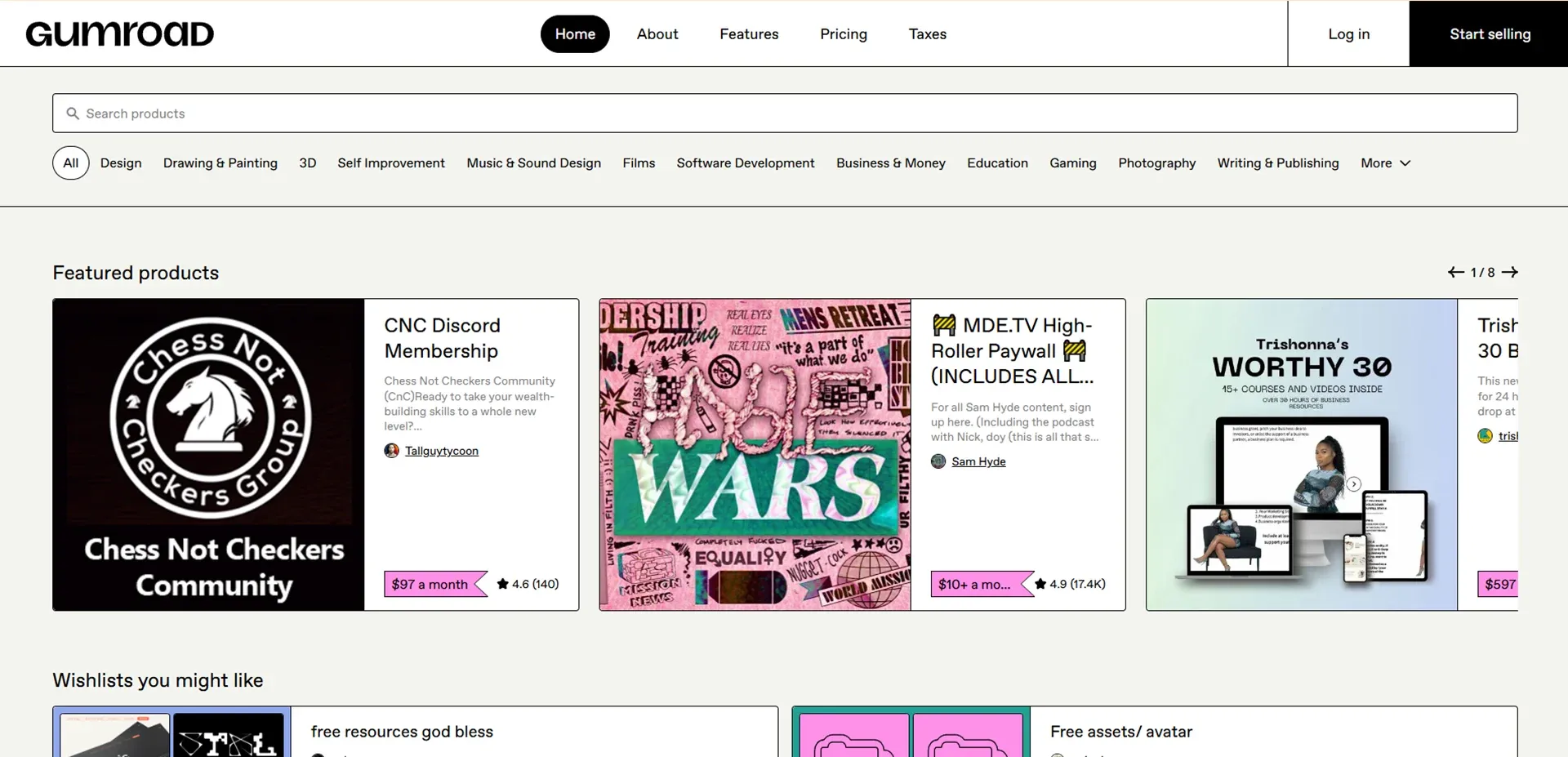
Pros
- Simple, quick setup for selling digital products
- Supports multiple content types, including courses and ebooks
- Built-in analytics and marketing tools
Cons
- Limited design customization options
- Higher fees for free accounts
- Primarily focused on digital products, not physical goods
- Pricing: 10% flat fee on sales
13. Zapier
Zapier offers a tool named Interfaces. You can build customized and interactive interfaces for all your workflows. And it's simple drag and drop, so anyone can do it. You can create dashboards, forms and custom portals using it. Zapier was already providing automation. But now you have more control on how the data is collected and displayed.
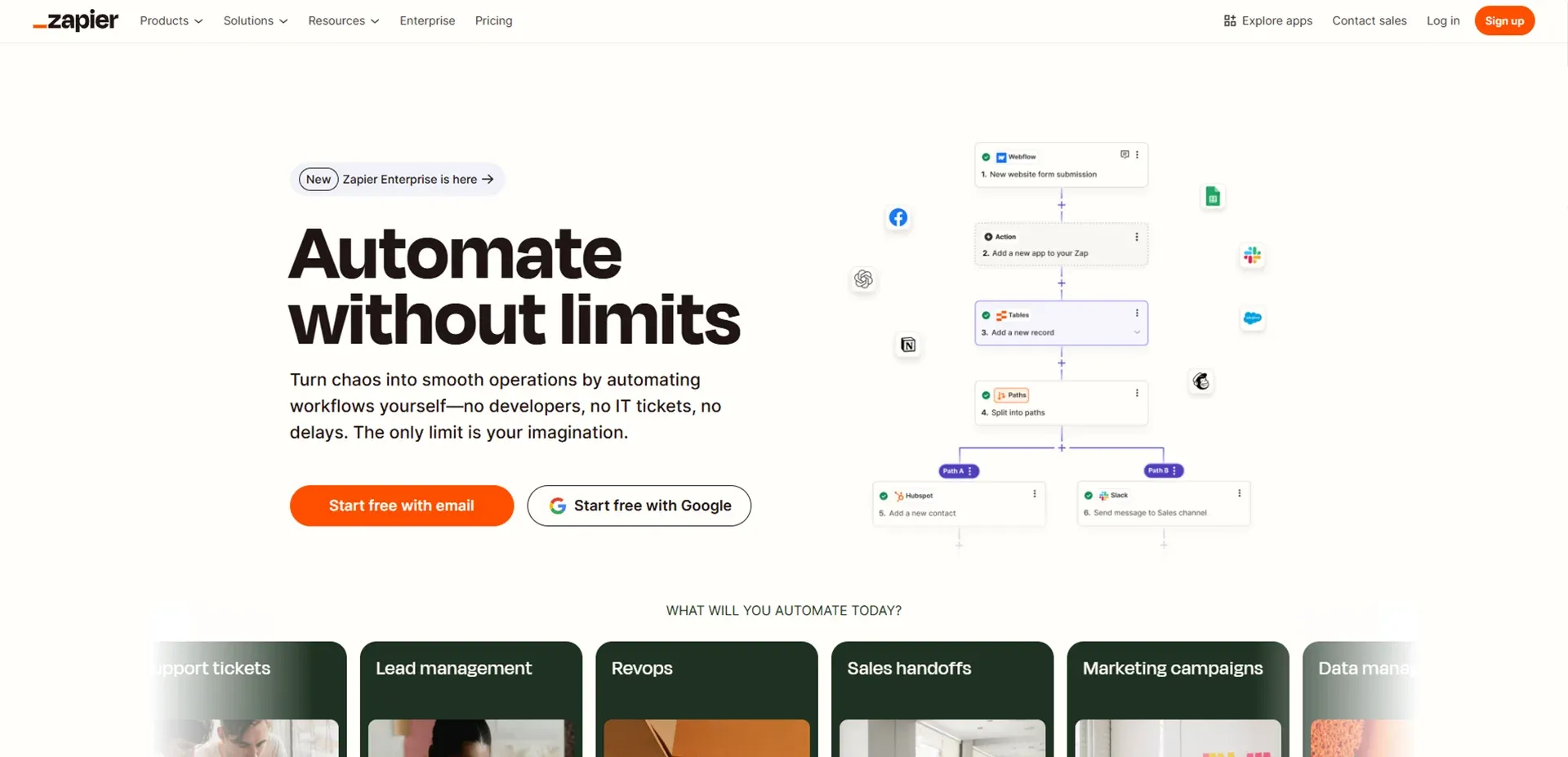
Pros
- User-friendly drag-and-drop design
- Seamless integration with Zaps for real-time automation
- Customizable UI elements for tailored forms and dashboards
- Versatile for creating portals, intake forms, and dashboards
Cons
- Limited customization for complex workflows
- Higher-tier plans required for advanced features
- Dependency on Zapier’s ecosystem for optimal functionality
- Pricing: Free version available, paid plan starts at $14/month
14. Typeform
You can create surveys and forms using Typeform. It comes with beautiful templates that you can use directly to share with users. If you want to get customer feedback or generate leads, you can use Typeform to reach your customers. Also, it shows one question at a time in most templates, so users are not overwhelmed. It helps you get higher responses.
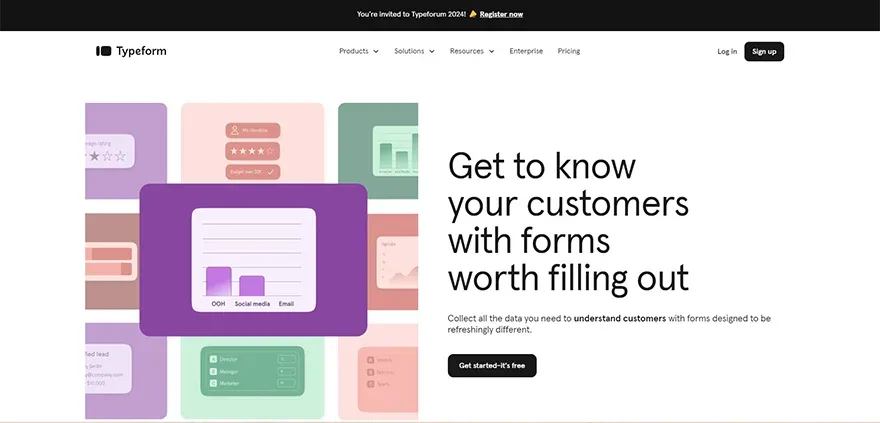
Pros
- User-friendly, visually engaging forms
- High response rates due to conversational interface
- Customizable and integrates with multiple platforms
Cons
- Limited in functionality for complex data collection needs
- Higher-tier plans can be costly
- Can be slow for large forms with many questions
- Pricing: Free version available, paid plan starts at $25/month
15. Adalo
Adalo is another no-code mobile and web app builder. Just like every other tool, it has drag and drop features. It makes it easy to create a fully functional app with a visually appealing interface. It's an amazing platform for those who want to create prototypes and launch simple apps quickly.
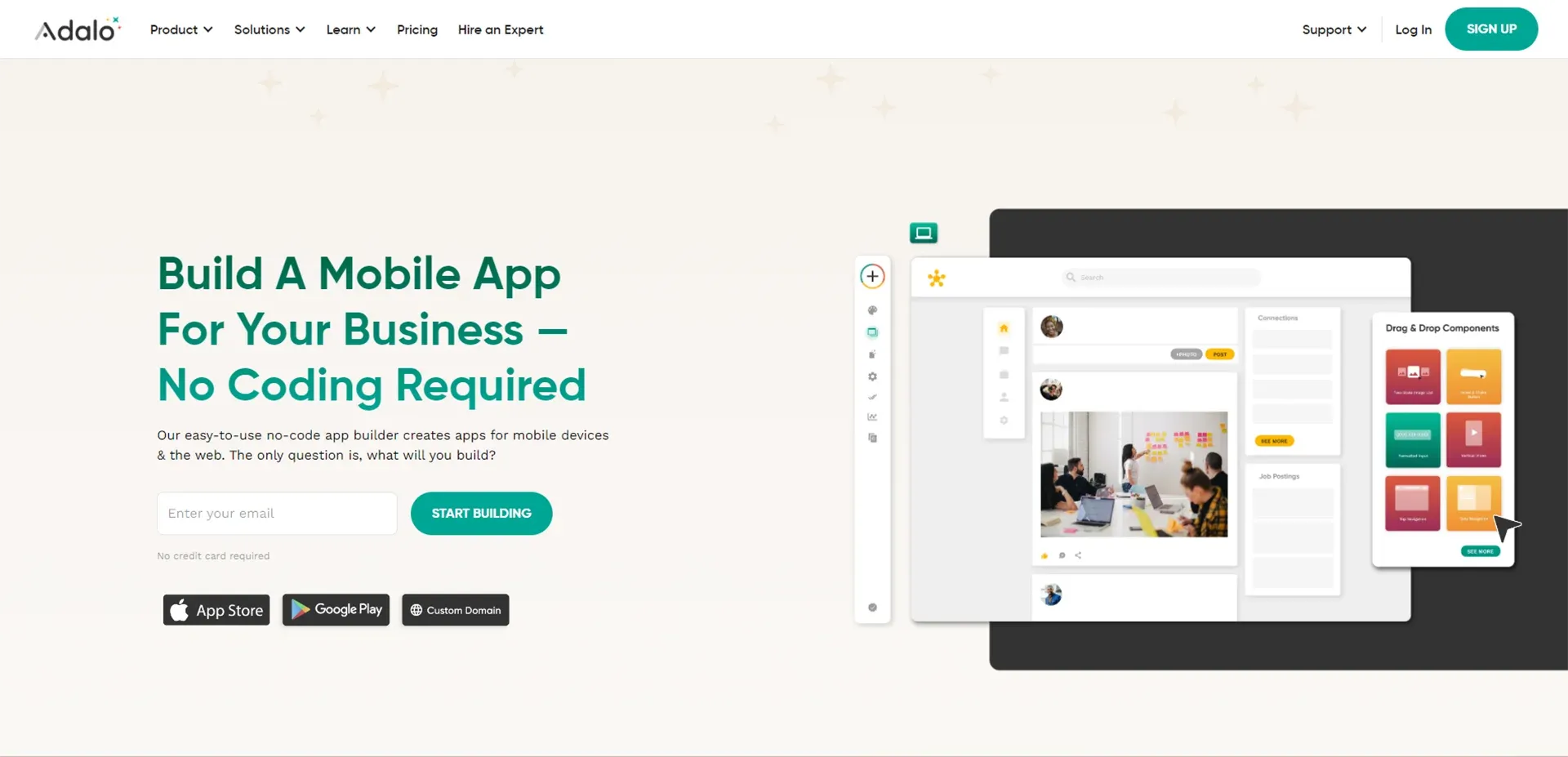
Pros
- Easy drag-and-drop interface for app creation
- Pre-built components save time in design
- Ideal for quick prototyping and launching MVPs
Cons
- Limited backend support for data-heavy apps
- Pricing can escalate with additional features
- Not as scalable for complex applications
- Pricing: Free version available, paid plan starts at $36/month
Conclusion
Whether you are in tech or non-tech business, you can’t miss out on using these tools to build your platform. And if you are not sure how to use these tools, don’t worry.
Our team at Rejoicehub will help you develop a site, apps, and workflows using no-code tools. We will customize it to match your business requirements and launch your platform faster in the market. With our no-code solutions, you can save time and resources on development.
Frequently Asked Questions
1. Can I build complex apps with no-code tools?
No-code tools can handle many app types, but highly complex apps may need some custom coding or advanced tools.
2. Are no-code platforms secure?
Yes, most no-code platforms prioritize security with encrypted data handling and access control features.
3. Is it expensive to use no-code tools?
No-code tools often have free or affordable plans, but costs may rise with advanced features or higher usage limits.
